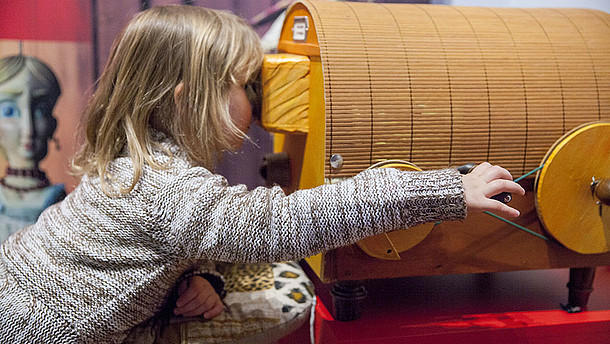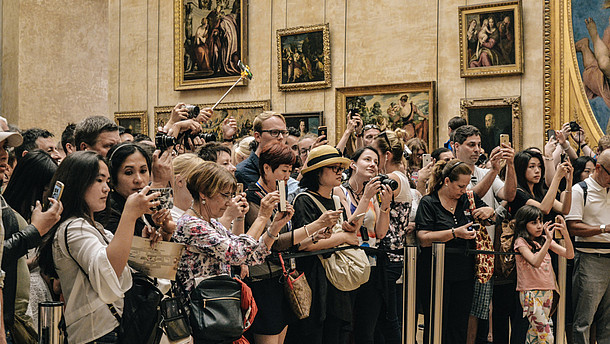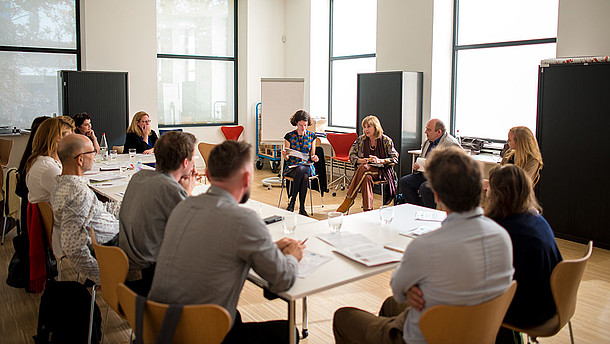1. The name of the network is the Network of European Museum Organisations (NEMO).
2. NEMO accepts members according to the following four membership categories:
a) Full members
Bodies being responsible for museums at national level, according to the following hierarchy:
- National Museums Association
- NGO working for museums on a national scale
- National governmental body being responsible for museums
In addition, the organisation must be located in the member countries of the Council of Europe. Only one full member per country is permitted.
b) Network members
Organisations representing more than 1 museum (eg. ICOM committees, museum umbrella foundations, other museum networks)
c) Individual organisations
Museums, interest groups, non-commercial service organisations for museums
d) Museum-related businesses
- Companies primarily focused on delivering goods and services to the museum sector.
NEMO does not accept individual members, but only organisations. Organisations must be located in one of the member countries of the Council of Europe.
3. Entry into membership will be approved by the Executive board and subject to payment of the required membership fee. This entitles the organisation to attend all NEMO conferences and receive other services and communications offered to members. Once the membership is approved, the required membership fee must be paid in due time. If members have not paid their membership more than 2 years in a row, the membership is automatically terminated.
4. Each member nominates one representative as their main contact through which NEMO communicates to the organisation. Other representatives may be appointed for different matters in relation with the membership. The name of the contacts will be confirmed annually.
5. Only members having paid their annual fee have the right to cast a vote. Each member of the network is entitled to vote at the General Assembly as follows:
- Full members: 10 votes
- Network members: 3 votes
- Individual organisations: 1 vote
- Museum-related businesses: No voting rights
6. Members with voting rights must appoint one representative who will vote at the General Assembly. The contact person of the member must inform the Secretariat of the name of this representative at least two weeks before of the General Assembly.
Only members present in person at the annual general meeting (AGM) can cast their vote. In case of absence, members can mandate their vote through a proxy to another member participating at the AGM. Members present can only vote on behalf of a maximum of one other member organisation.
7. The executive board is made up of one chairperson and up to six members. The term for all executive board members, including the chairperson is 3 years. Members of the executive board can serve a maximum of 4 consecutive terms. The terms for both the chairperson and other executive board members can be altered only through a resolution at the General Assembly passed by a two-thirds majority of votes.
Members of the membership categories a), b), and c) are eligible to stand for election to the executive board. At least 4 members of the executive board must be full members.
8. Only a full member who is currently on the executive board is eligible to stand for election as chairperson.
9. The network should meet at least once a year.
10. The chairperson summons the meetings and prepares the agenda on behalf of the executive board.
11. If 1/3 of the total member votes ask for an extraordinary meeting to be held, it must be summoned.
12. The Annual Meeting makes decisions by simple majority. In the event of an equal division of votes the vote of the chairperson has a casting vote.
13. The executive board convenes the Annual Meeting by means of a written notification to the members in due time. Members can propose topics for the agenda one month in advance of the meeting. The items to be considered at the annual meeting will, inter alia, include:
- Election of executive members (if applicable);
- Annual report of the executive board including financial affairs;
- Short-term and long-term strategy objectives and goals;
- Decision about annual membership fees and priorities of the network.
14. The executive board's role and function is
- Meeting with relevant stakeholders whom NEMO wishes to influence and work with
- Making decisions that are needed between General Assemblies
- Monitoring and approving budgets and funding applications
- Actively seeking further financial support for the network
- Approving the membership of all prospective Members
- Proposing the fees for membership
- Convening the General Assembly, creating on the agenda and arrangements for the General Assembly along with the Secretariat
- Electing the chairperson of the executive board
- Hiring the secretary general
- Receiving and approving relevant documents including management accounts, annual reports and other relevant documents for its regular work meetings in a timely manner
- Appointing and overseeing whatever secretarial support or other staff it deems necessary
- Monitoring the work of the voluntary Working Groups of the network
- The members give their mandate to the executive board to speak on their behalf.
15. Changes to the statutes have to be prepared by the executive board and accepted by the Annual Assembly. The executive board must be informed about the proposed changes at least 6 weeks in advance before the Annual Assembly.
16. NEMO may dissolve itself, if two thirds of the total votes of members agree.
The statutes were approved by the NEMO meeting in Italy 1993 and revised based on decisions taken at the AGM in Dublin 1995, in Amsterdam 2004, in Copenhagen 2010, in Valletta in 2018 and online in 2020.










